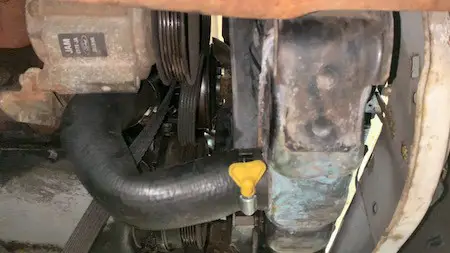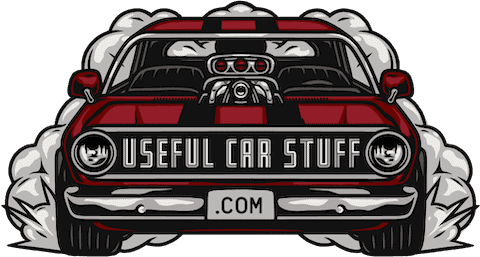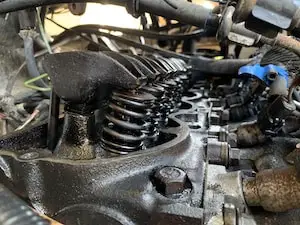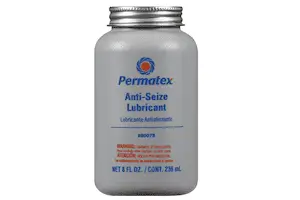The combination of coolant heating up and swirling through the engine results in corrosion and if neglected can leave the cooling system full of gunk and not cool as efficiently. Removal of radiator hoses can prove to be difficult and frustrating. Even that is an understatement. Let’s make this the first time that you remove heater hoses the right (easy) way. It involves a few simple tricks explained in this short post.
Remove radiator hoses most easily with the use of a hose clamp removal tool, and a pick to break the hose free at the connection point. Using a heat gun or other technique to soften the rubber radiator hose will make pulling the hose off nearly effortless. Twist and move back and forth as you gently pull the hose off.
Follow along here for the steps to remove hose clamps with a simple inexpensive tool and to see how it is possible to remove radiator hoses without cutting them off. If the radiator hoses are going to be replaced then of course cutting them is the fastest way to get them off and is recommended.
Remove Spring Loaded Hose Clamps
Spring Loaded Hose Clamps are possible to remove with pliers, vice-grips, or even more easily with this simple tool. This tool enables you to reach the clamp in difficult places and locks the clamp open to free up both of your hands. This is easily one of the best $ spent on inexpensive tools for car maintenance you’ll make. To see the rest of the tools that I find to be my favorites visit the resource page.
If you do not have the time to wait for the tool to arrive, I recommend a pair of channel locks or vise-grips and ordering the tool for next time!
Removing Radiator Hoses Without Ruining Them

Remove Radiator hoses without ruining them by removing the hose clamp, inserting a large pick or similar tool underneath the hose to break it free from the contacting surface, and add some heat to the hose to soften the rubber and removal becomes very quick and easy.
Need a heat gun? Check out the resource page.
Another tip that works for some is to spray a bit of windex, or WD-40 to further soften the connection between the rubber hose and metal.
Remove Radiator Hoses By Cutting Them Off
When I do a major job like a radiator flush, or replace the water pump, I often replace the radiator hoses as part of the job simply because I like to replace them as soon as I see any significant wear and before they have a chance to fail on me on the road. Replacing the hoses only costs a few bucks and is a wise thing to do every 5 years or so.
If you are going to replace the radiator hoses, then the best way to remove the old hoses is to use a utility knife to cut a line in the hose from the end of the hose to the end of the flange that it is connected to. This small cut will allow for the stiff rubber to flex enough to break free and come off very easily.
The use of a pick or screwdriver will also aid in prying the rubber free but with a slice in the hose and some back and forth movement of the hose should do a good job at breaking the hose free.
What Causes Radiator Corrosion
Using water in the radiator and not changing the coolant frequently enough are the two main causes of corrosion in a radiator. The use of proper coolant in an engine cooling system will not rust.
If old coolant, or coolant mixed with sludge that has developed from corrosion in a radiator is left too long in the engine it can result in further corrosion in the radiator causing leaks and it can cause damage to the water pump and ultimately interfere with the ability of the engine to stay cool.
Where to Place Radiator Hose Clamps
Radiator hose clamps should be placed centered between the end of the hose and the end of the metal of the inner housing whether it is connected to the thermostat neck or the inlet or outlet of the radiator. Placing the clamp to close to the end of the hose can cause a leak and corrosion around the end of the flared metal.
All radiator hose connection points have a flared end that contribute to the hose clamps ability to seal. The hose clamp should be placed past the flared end to ensure a tight seal and the flare is there to prevent the hose from being able to pop off.
Should I Replace My Radiator Hose Clamps?
Always a good idea to replace the hose clamps if they look old or worn (I do this for all important hoses on my cars).
That way you have far less incidents where the hose clamp fails and the pressurized line can break and leak leaving you stranded wherever it decides to give out. I realize these instances are rare but that is because most people drive new cars. For us that are keeping our old cars alive, we have to replace little things like hose clamps.
In general if there are any rubber hoses in your car that have become stiff or cracked or seem old, replace them. This will keep your car running smoothly and reliably and will save you headaches of troubleshooting in the future.


